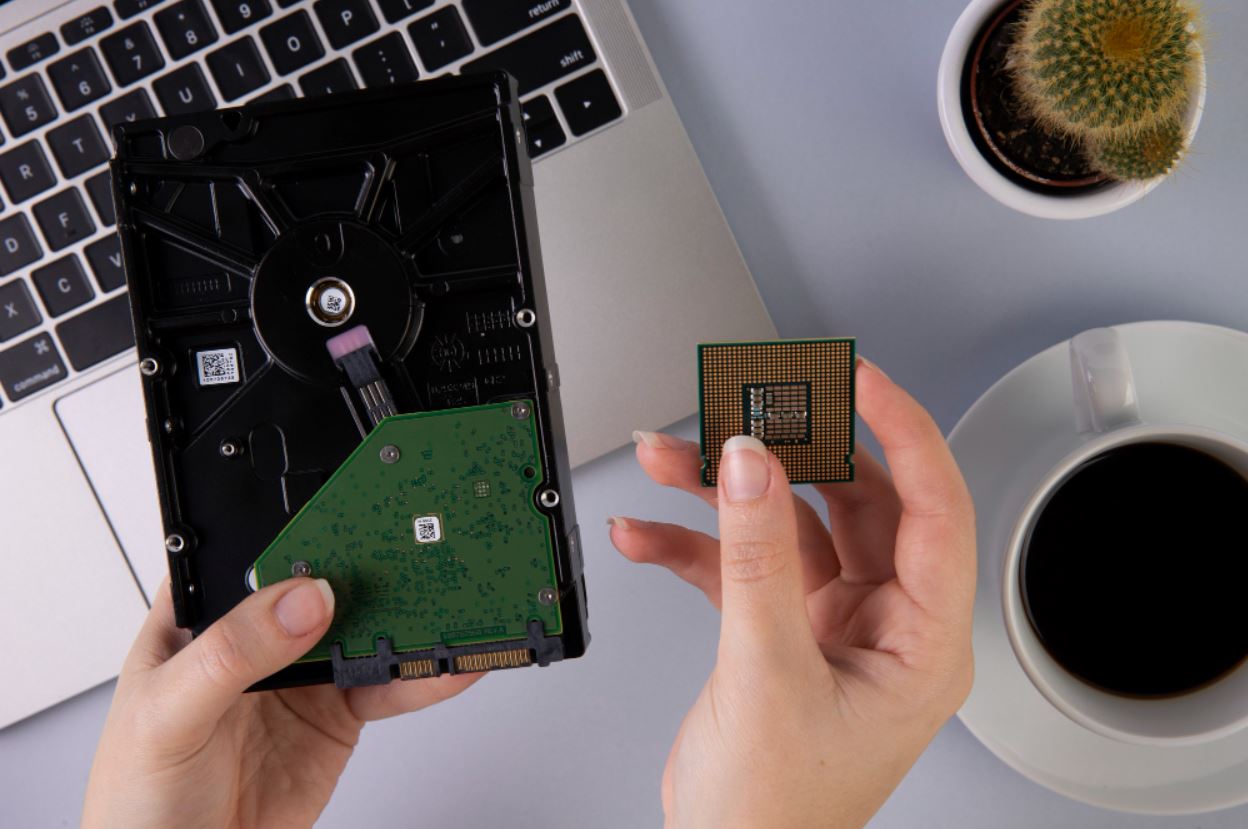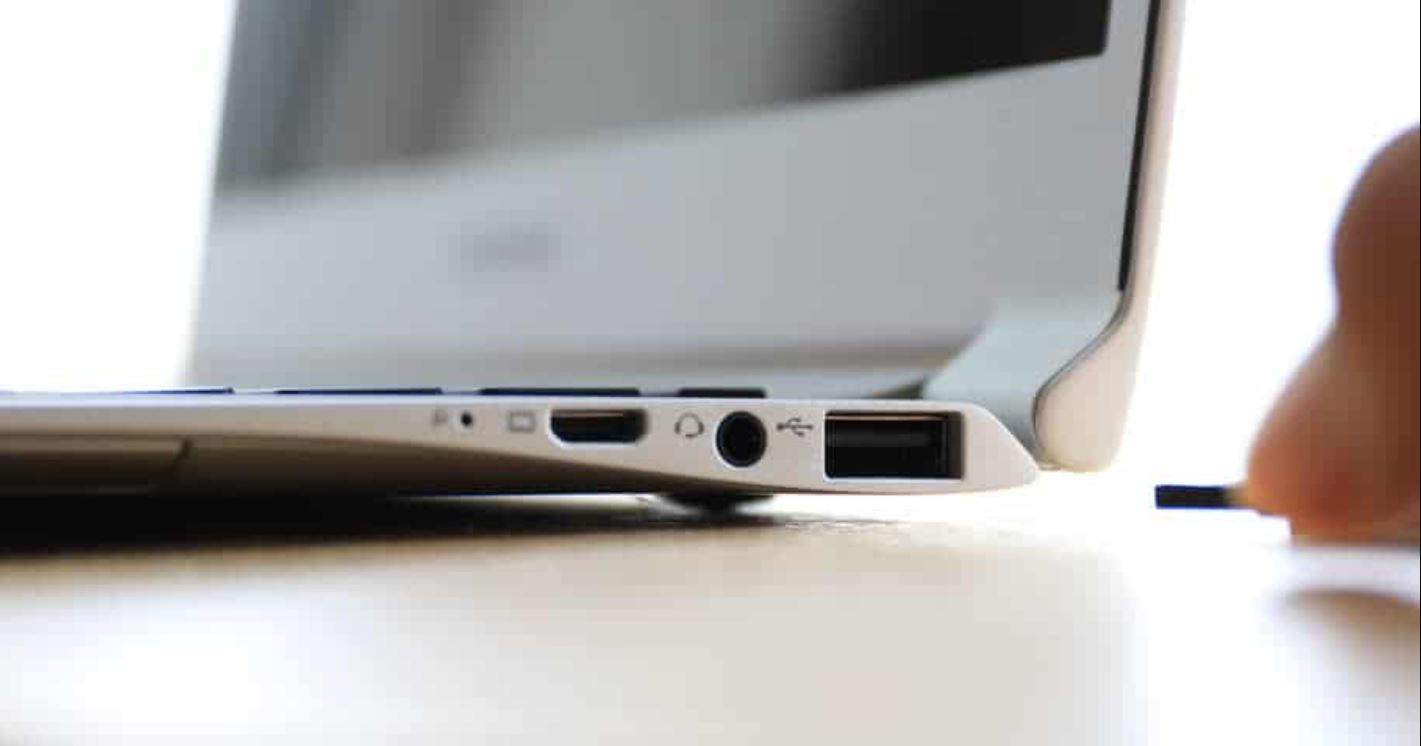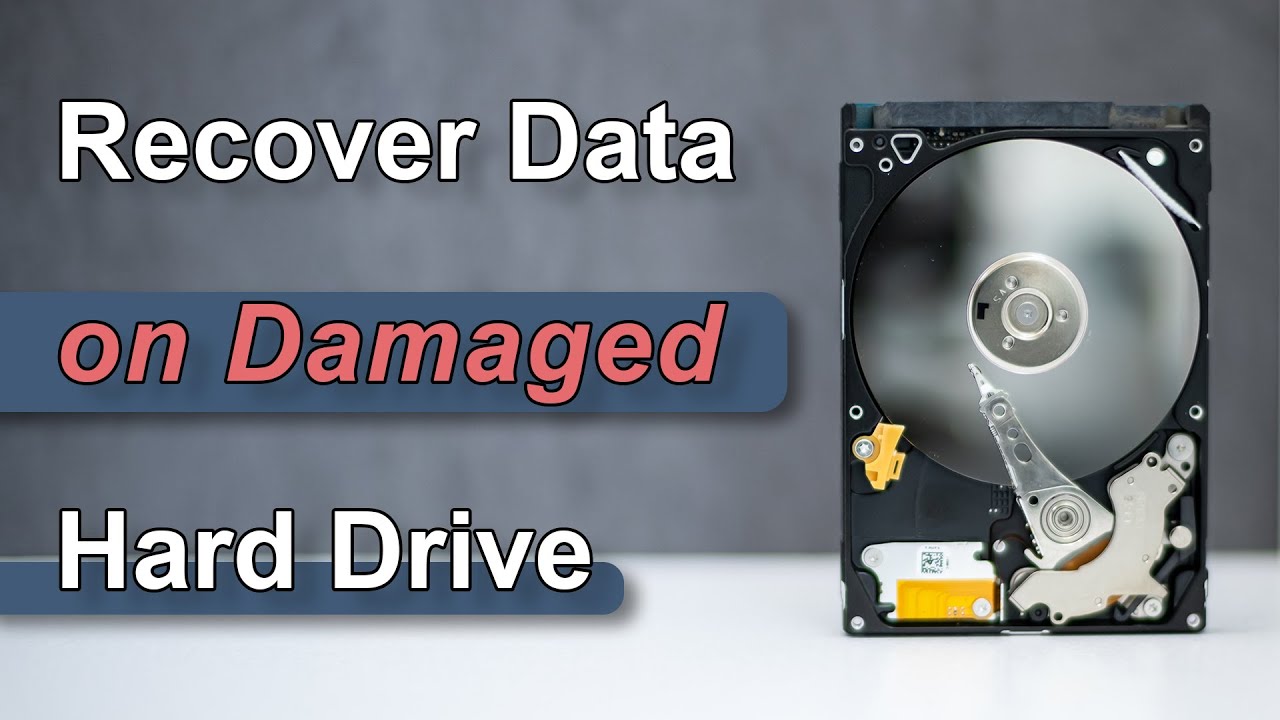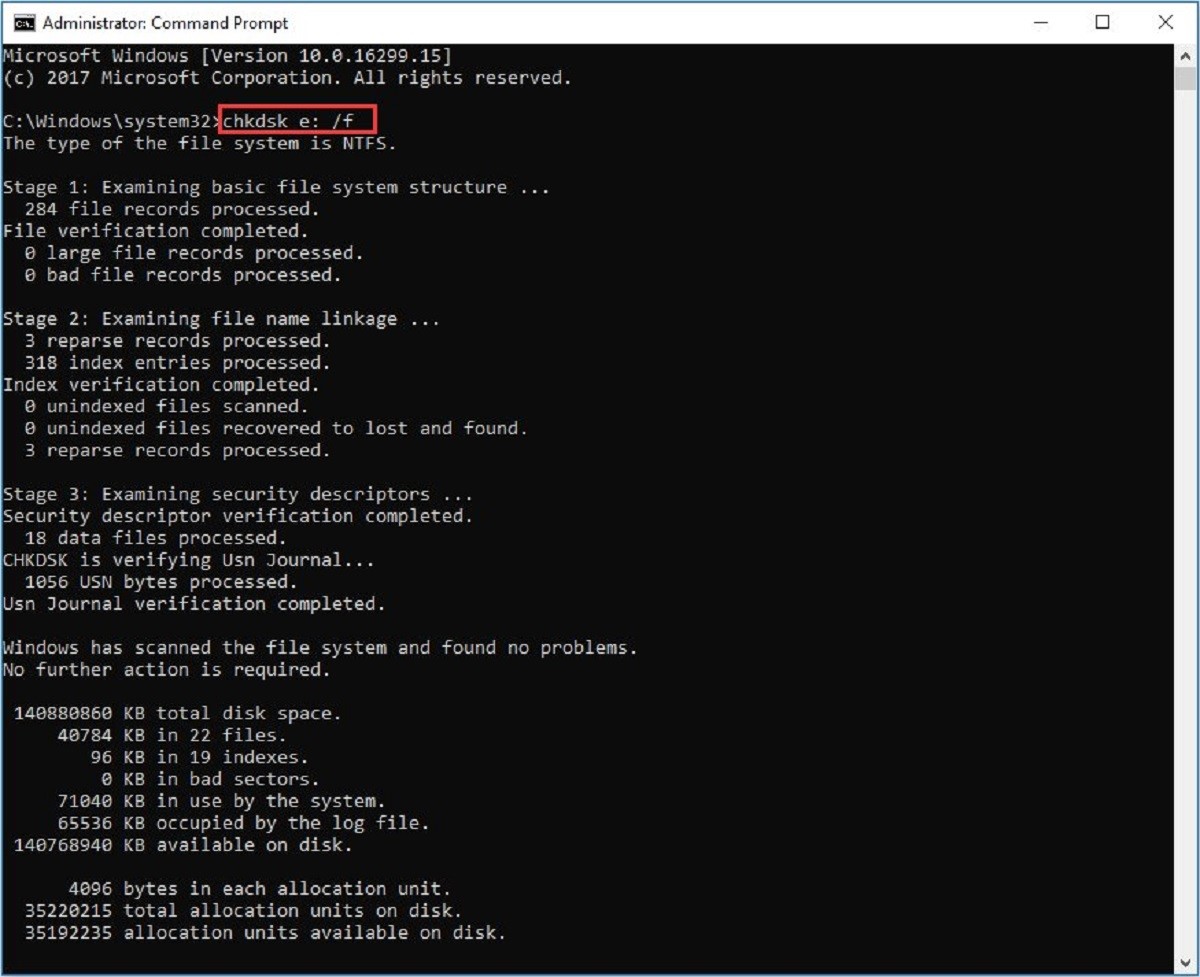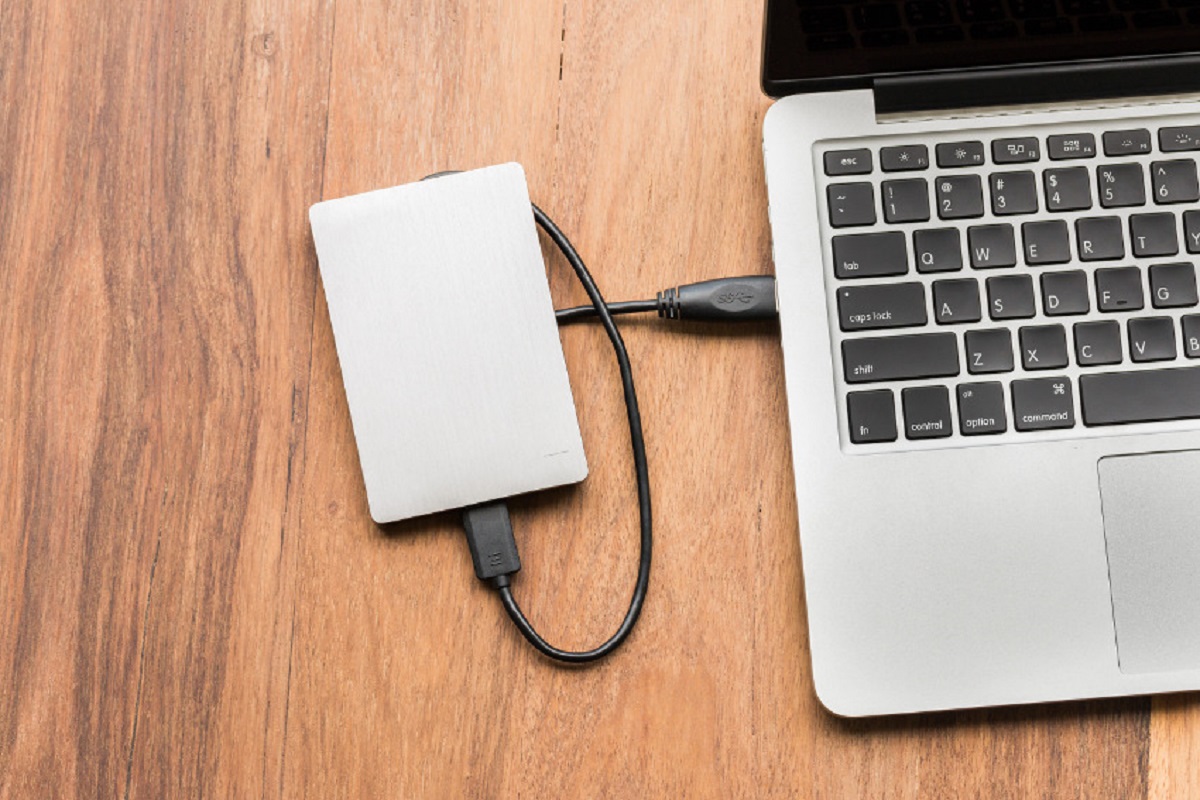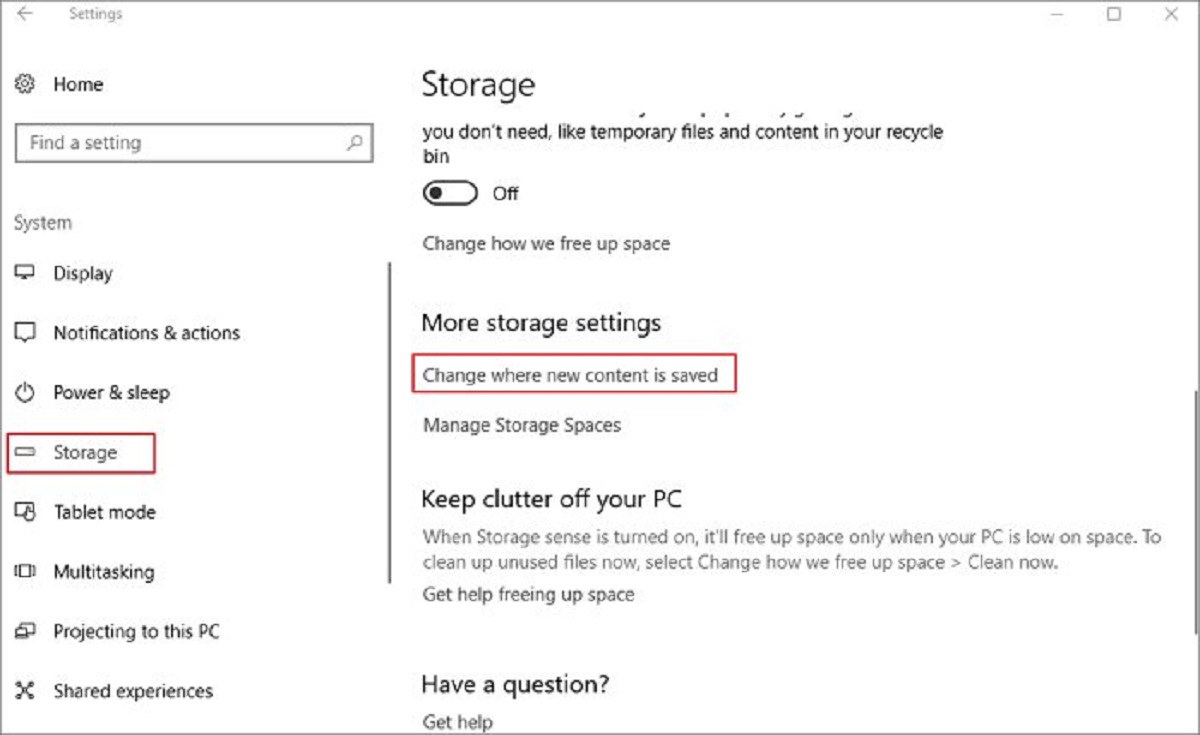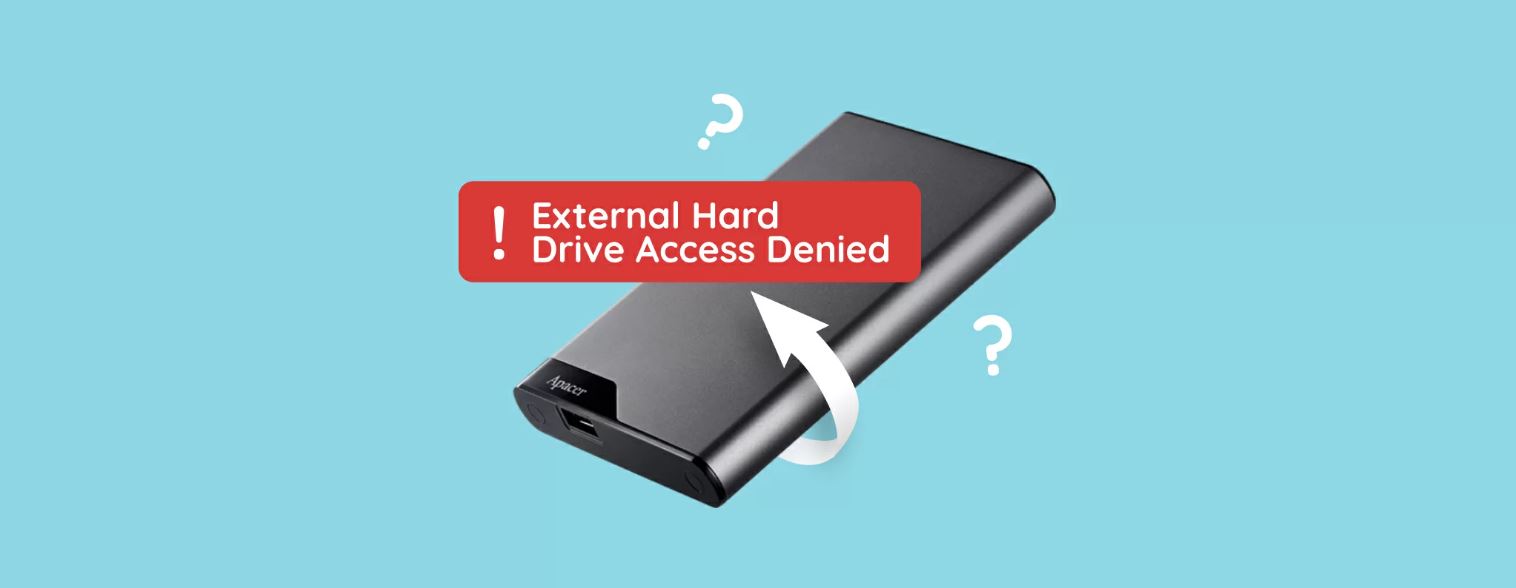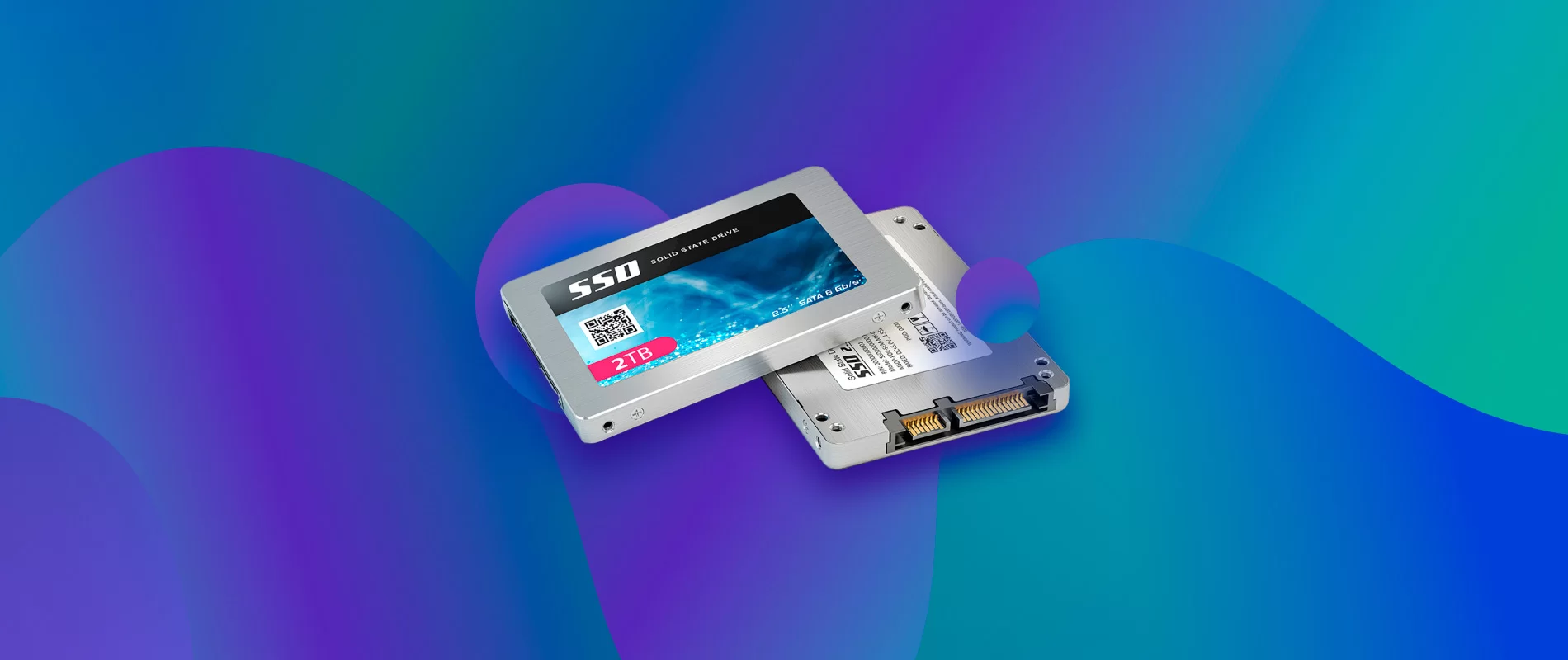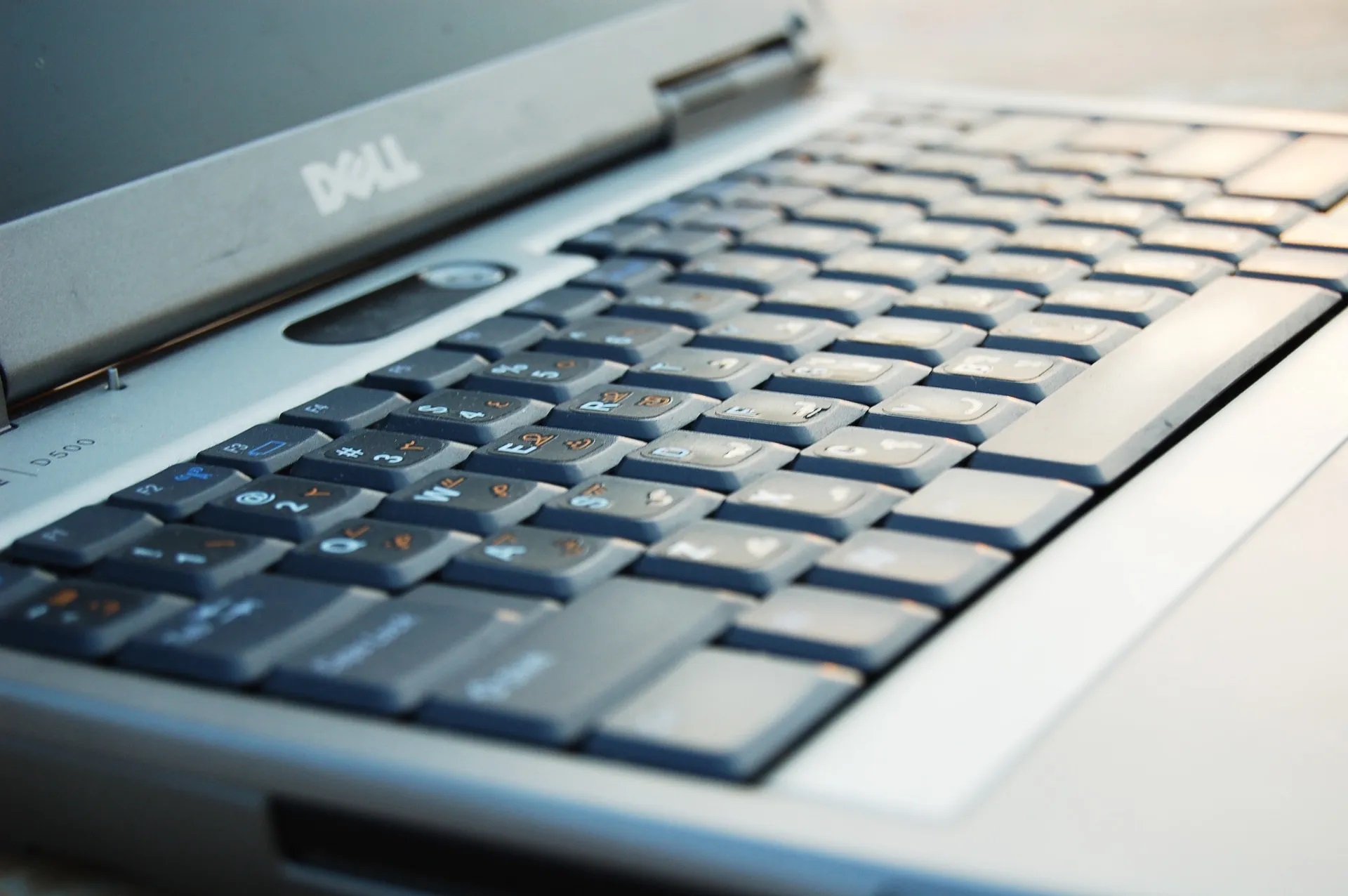Why Does My Computer Freeze When I Plug in an External Hard Drive?
Plugging in an external hard drive should be a straightforward task, but sometimes it can result in your computer freezing unexpectedly. This frustrating issue can disrupt your workflow and cause inconvenience. Understanding why this happens is the first step towards finding a solution.
There are several possible causes for your computer freezing when you connect an external hard drive. Outdated or incompatible USB drivers can be a common culprit. When the drivers responsible for managing USB connections are not up to date or incompatible with your system, conflicts can occur, leading to freezing issues.
Power supply problems can also cause your computer to freeze. If your power supply is not providing sufficient power to both your computer and the external hard drive, it can overload the system, resulting in freezing or crashing. Similarly, if the cables connecting the power supply or the external hard drive are faulty or loose, they can disrupt the power flow and cause freezing.
In some cases, the external hard drive itself may be the problem. A corrupted file system or files on the drive can create conflicts with your computer’s operating system, leading to freezing. Additionally, if the external hard drive is infected with a virus or malware, it can impact the overall system performance and cause freezing.
Insufficient RAM or processing power can also contribute to freezing when plugging in an external hard drive. When your computer lacks the necessary resources to handle the additional load from the external device, it can lead to freezing or slow performance.
Furthermore, issues with the USB ports on your computer can be a potential cause of freezing. If the port you are using is damaged or malfunctioning, it can disrupt the connection and lead to freezing issues.
By identifying the possible causes for your computer freezing when connecting an external hard drive, you can take appropriate steps to resolve the issue. In the following sections, we will explore the solutions to these problems and help you fix the freezing issue.
Common Causes for Computer Freezing with External Hard Drive
When your computer freezes upon plugging in an external hard drive, there are several common causes that could be contributing to this issue. Understanding these causes can help you troubleshoot and resolve the freezing problem effectively.
One of the leading causes of computer freezing is outdated or incompatible USB drivers. If the drivers responsible for managing the USB connections on your computer are not up to date or are not compatible with your operating system, conflicts can arise, resulting in freezing or crashing when you connect an external hard drive.
Power supply issues can also lead to freezing when you plug in an external hard drive. If your computer’s power supply isn’t providing sufficient power to both the computer and the external device, it can overload the system, causing freezing or crashes. Similarly, faulty or loose cables connecting the power supply or the external hard drive can disrupt the power flow and trigger freezing issues.
A corrupted file system or files on the external hard drive can also be a common cause of freezing. When the file system becomes corrupted or specific files on the drive are damaged, conflicts can occur with your computer’s operating system, resulting in freezing when the external hard drive is connected.
Another potential cause of computer freezing is a virus or malware-infected external hard drive. If the drive is compromised, the virus or malware can spread to your computer and impact its overall performance, leading to freezing issues. It’s crucial to regularly scan your external hard drive for any malicious threats.
Insufficient RAM or processing power can also contribute to freezing when using an external hard drive. If your computer doesn’t have enough available resources to handle the additional load from the external device, it may freeze or experience slow performance.
Issues with the USB ports on your computer can also cause freezing problems. Damaged or malfunctioning USB ports can disrupt the connection between the computer and the external hard drive, resulting in freezing or intermittent connectivity.
Identifying these common causes for computer freezing with an external hard drive is the first step in resolving the issue. In the upcoming sections, we will discuss various solutions to these problems and guide you through the troubleshooting process.
Outdated or Incompatible USB Drivers
One of the common causes of computer freezing when plugging in an external hard drive is outdated or incompatible USB drivers. The drivers responsible for managing USB connections on your computer need to be up to date and compatible with your operating system to ensure smooth operation.
When the USB drivers are outdated, they may not be equipped to handle the communication between your computer and the external hard drive effectively. This can result in conflicts and freezing issues when you connect the drive.
Incompatibility between the USB drivers and your operating system can also lead to freezing. Different versions of operating systems require specific USB drivers that are compatible with their architecture and functionalities. If you have recently updated your operating system and haven’t updated the corresponding USB drivers, it can cause issues when connecting external devices.
To resolve the problem of outdated or incompatible USB drivers, you can follow these steps:
- Step 1: Identify the manufacturer and model of your computer’s motherboard or USB controller. This information can usually be found in your computer’s system settings or by referring to the manufacturer’s documentation.
- Step 2: Visit the manufacturer’s official website and navigate to the support or drivers section.
- Step 3: Locate the appropriate USB drivers for your motherboard or USB controller model and download them onto your computer.
- Step 4: Once the drivers are downloaded, run the installation program and follow the on-screen instructions to update the USB drivers.
- Step 5: Restart your computer to apply the changes.
After updating the USB drivers, try connecting the external hard drive again to see if the freezing issue persists. In most cases, updating the drivers resolves the problem and allows for seamless connectivity between your computer and the external device.
Note that some operating systems, such as Windows, have built-in mechanisms for automatically updating drivers. It’s a good practice to enable automatic driver updates to ensure you always have the latest and compatible drivers for your USB devices.
By addressing the issue of outdated or incompatible USB drivers, you can eliminate a common cause of computer freezing when plugging in an external hard drive and restore normal functionality to your system.
Power Supply Issues
Power supply issues can often be the culprit behind computer freezing when you plug in an external hard drive. Insufficient power or faulty cables can disrupt the system’s stability and lead to freezing or crashes.
When the power supply unit (PSU) does not provide enough power to both your computer and the external hard drive, it can overload the system and cause freezing. This is especially common if you have a low wattage power supply or if the power supply is nearing its maximum capacity. The additional power required to run the external hard drive can push the limits of the power supply, resulting in instability and freezing.
Faulty or loose cables connecting the power supply or the external hard drive can also interrupt the power flow and cause freezing. A loose connection can lead to an intermittent power supply, which can result in sudden freezing or drops in performance.
To troubleshoot power supply issues, follow these steps:
- Step 1: Verify that your power supply has enough wattage to support the computer and the external hard drive simultaneously. Consult the documentation or specifications provided by the manufacturer to determine the power requirements for both devices. If your power supply is below the recommended wattage, consider upgrading to a higher wattage PSU.
- Step 2: Check the cables connecting the power supply to your computer and the external hard drive. Ensure that they are securely plugged in and not damaged or frayed. If any cables are faulty or damaged, replace them with new ones.
- Step 3: Test the power supply by connecting the external hard drive to a different power outlet or surge protector. Sometimes, power issues can arise from faulty outlets or power strips. By using a different power source, you can determine if the freezing problem persists.
- Step 4: Consider using a powered USB hub. A powered USB hub is an external device that connects to your computer and provides additional power to the connected USB devices, including the external hard drive. This can help alleviate power-related issues and ensure stable connectivity.
By addressing power supply issues and ensuring sufficient power to both your computer and the external hard drive, you can eliminate one of the common causes of freezing and enjoy uninterrupted use of your device.
Insufficient Power to the External Hard Drive
Another common cause of computer freezing when plugging in an external hard drive is insufficient power being supplied to the drive. External hard drives require a certain amount of power to function properly, and if they do not receive enough power, it can result in freezing or connectivity issues.
The power required by an external hard drive can vary depending on its specifications, such as its size, speed, and additional features. If your computer’s USB port does not provide enough power to meet the demands of the external hard drive, it can lead to instability and freezing.
In some cases, USB ports on older computers may not be able to deliver the necessary power. USB 2.0 ports, for example, have a lower power output compared to USB 3.0 or USB-C ports, which can cause issues when connecting power-hungry external devices. Using a USB port that does not support the power requirements of your external hard drive can result in freezing.
To troubleshoot insufficient power to the external hard drive, follow these steps:
- Step 1: Check the specifications of your external hard drive to determine its power requirements. Look for information regarding the voltage and amperage needed to operate the drive efficiently.
- Step 2: Connect the external hard drive to a different USB port on your computer. If your computer has multiple USB ports, try connecting the drive to a USB 3.0 or USB-C port, as these ports generally provide more power compared to USB 2.0 ports. This can help ensure that the drive receives sufficient power.
- Step 3: If available, use a powered USB hub. A powered USB hub connects to your computer and provides additional power to the connected USB devices. This can help overcome power limitations of individual USB ports and provide sufficient power to the external hard drive.
- Step 4: Consider using an external power adapter for your external hard drive. Some external hard drives come with an optional power adapter that can be connected to an electrical outlet. This allows the drive to draw power directly from the adapter instead of relying solely on the USB port.
By ensuring sufficient power is being supplied to the external hard drive, you can eliminate another common cause of freezing and improve the overall stability and performance of your system.
Corrupted Files or File System on External Hard Drive
A common cause of computer freezing when plugging in an external hard drive is a corrupted file system or damaged files on the drive. If the file system or specific files on the external hard drive become corrupted, it can lead to conflicts with your computer’s operating system, resulting in freezing or crashing.
The file system is responsible for organizing and managing the files and directories on your external hard drive. When the file system becomes corrupted, it can impair the drive’s functionality and disrupt the communication with your computer.
Corruption can occur due to various reasons, such as improper ejection of the drive, power outages during file operations, or even physical damage to the drive. Additionally, if specific files on the drive are damaged or contain errors, it can also cause freezing issues when the drive is connected.
To address corrupted files or file system issues on your external hard drive, follow these steps:
- Step 1: Run a disk check utility on the external hard drive. Both Windows and macOS have built-in tools that can scan for and repair errors on the drive. In Windows, you can use the CHKDSK (Check Disk) utility, while macOS has the First Aid feature in Disk Utility.
- Step 2: Before running any disk check utility, make sure to safely eject the external hard drive from your computer. This ensures that any ongoing read or write operations are completed, preventing further corruption.
- Step 3: Connect the external hard drive back to your computer and open the disk check utility. Follow the on-screen instructions to scan and repair any errors or inconsistencies on the drive.
- Step 4: If the disk check utility is unable to fix the issues, you may need to consider using data recovery software to retrieve your important files from the external hard drive. Be sure to backup any critical data before attempting data recovery.
- Step 5: Once the file system or files are repaired or recovered, perform a thorough scan using reliable antivirus software to ensure that the drive is free from viruses or malware.
By addressing corrupted files or file system issues on your external hard drive, you can prevent freezing problems and ensure the smooth operation of your device.
Virus or Malware Infestation
An often overlooked cause of computer freezing when plugging in an external hard drive is a virus or malware infestation on the drive itself. If the external hard drive is infected with malicious software, it can spread to your computer and impact its performance, leading to freezing or crashes.
Viruses and malware can infect external hard drives through various means, such as downloading files from unsafe websites, opening malicious email attachments, or transferring infected files from another device. Once the drive is compromised, the malicious software can interfere with your computer’s processes, causing freezing or other performance issues.
It is crucial to regularly scan your external hard drive for viruses and malware to ensure its integrity and prevent any potential harm to your computer. To address virus or malware infestation, follow these steps:
- Step 1: Disconnect the external hard drive from your computer to prevent any further spread of the infection.
- Step 2: Scan the external hard drive using reputable antivirus software. Make sure the software is up to date with the latest virus definitions.
- Step 3: Allow the antivirus software to scan the entire external hard drive thoroughly. This process may take some time, depending on the size of the drive and the number of files stored on it.
- Step 4: If the antivirus software detects any infected files, follow the prompts to quarantine or remove them from the external hard drive.
- Step 5: After the scan and removal process is complete, restart your computer and reconnect the external hard drive to ensure that it is now free from viruses or malware.
Regularly updating the antivirus software and performing scans on both your computer and external hard drive can help prevent future infections and ensure a secure computing environment.
Remember to exercise caution when connecting external hard drives to your computer, and avoid downloading files from untrusted sources or opening suspicious email attachments. By taking these proactive measures, you can minimize the risk of virus or malware infestations and prevent freezing problems caused by malicious software.
Insufficient RAM or Processing Power
Insufficient RAM (Random Access Memory) or processing power can be a significant cause of computer freezing when plugging in an external hard drive. If your computer does not have enough available resources to handle the additional load from the external device, it can lead to freezing, slow performance, or even crashes.
RAM plays a crucial role in providing temporary storage for data that your computer’s processor needs to access quickly. When you connect an external hard drive, it requires a certain amount of RAM to process the data and perform read and write operations effectively. If your computer’s RAM is limited or already overloaded with other tasks, it can strain the system when the external hard drive is connected, resulting in freezing.
Similarly, the processing power of your computer’s CPU (Central Processing Unit) contributes to its overall performance. If your computer has a slower or outdated processor, it may struggle to handle the additional demands of the external hard drive, leading to freezing or lagging.
To address issues related to insufficient RAM or processing power, consider the following steps:
- Step 1: Check the specifications of your computer to determine the amount of RAM and processing power it has. If your computer has a small amount of RAM or an older processor, it may be worth considering an upgrade to improve performance.
- Step 2: Close any unnecessary programs or processes running on your computer before connecting the external hard drive. This frees up resources and ensures that more RAM and processing power are available for the drive.
- Step 3: If feasible, add more RAM to your computer. Increasing the amount of available RAM can help accommodate the additional load when using an external hard drive.
- Step 4: Upgrade your computer’s processor if you find that it’s struggling to handle the demands of the external hard drive. Consult with a professional or refer to the manufacturer’s recommendations for compatible processor upgrades.
- Step 5: Consider using an external SSD (Solid-State Drive) instead of a traditional hard drive. SSDs generally offer faster data transfer speeds and require less processing power, providing a smoother experience when using an external storage device.
By ensuring that your computer has sufficient RAM and processing power, you can alleviate the strain on the system when using an external hard drive and prevent freezing or performance issues.
USB Port Issues
USB port issues can be a common cause of computer freezing when plugging in an external hard drive. If the USB ports on your computer have problems, such as being damaged or malfunctioning, it can disrupt the connection between the computer and the external hard drive, leading to freezing or intermittent connectivity.
Damaged USB ports can result from physical wear and tear, improperly inserting or removing USB devices, or power surges. Loose or bent USB connectors can also contribute to connection problems and freezing. Additionally, dust or debris accumulation within the USB ports can cause poor contact and affect the stability of the connection.
To troubleshoot USB port issues, follow these steps:
- Step 1: Inspect the USB port for any physical damage. Check for bent or broken pins, loose connections, or signs of debris. Use compressed air or a soft brush to clean out any dust or debris that may be obstructing the port.
- Step 2: Try connecting the external hard drive to a different USB port on your computer. Sometimes, certain ports may be more reliable than others, especially if they haven’t experienced any damage.
- Step 3: Test the USB port by plugging in a different USB device. If the port doesn’t recognize or function properly with other devices, it indicates a potential issue with the port itself.
- Step 4: If the USB port is damaged or malfunctioning, you may need to consider using a USB expansion card or a USB hub. These devices provide additional USB ports that can be connected to your computer for a stable and reliable connection.
- Step 5: If the USB port issues persist or if you’re unsure about the extent of the problem, consider seeking professional help from a technician or contacting the computer manufacturer for further assistance.
By addressing USB port issues and ensuring a stable connection between your computer and the external hard drive, you can eliminate one of the potential causes of freezing and experience uninterrupted use of your device.
External Hard Drive Failure or Damage
Another possible cause of computer freezing when plugging in an external hard drive is the drive itself experiencing failure or damage. External hard drives consist of mechanical and electronic components, and over time, they can wear out or become damaged, resulting in freezing or other connectivity issues.
Physical damage to the external hard drive, such as drops, impacts, or exposure to extreme temperatures, can cause internal components to malfunction. Mechanical failures, such as a failing read/write head or motor, can disrupt the normal operation of the drive, leading to freezing or inability to access data.
Electrical failures can also occur, such as a faulty PCB (Printed Circuit Board) or failed power supply. These issues can affect the power distribution or the data transfer capabilities of the drive, causing freezing or intermittent connectivity.
To determine if the external hard drive is experiencing failure or damage, consider the following steps:
- Step 1: Disconnect the external hard drive from your computer and examine it for any physical damage. Look for signs of cracks, dents, or other visible signs of damage.
- Step 2: Listen for any unusual noises coming from the drive when it is powered on and connected. Clicking, grinding, or whirring sounds may indicate mechanical failures.
- Step 3: Try connecting the external hard drive to a different computer or USB port to rule out any issues specific to your computer.
- Step 4: If possible, use diagnostic software provided by the manufacturer to check the health and status of the external hard drive. This software can help identify potential failures or damage.
- Step 5: If you suspect external hard drive failure or damage, consider consulting a professional data recovery service to salvage any important data. Attempting DIY repairs or recovery measures without the necessary expertise can worsen the situation.
If the external hard drive is indeed showing signs of failure or damage, it may be necessary to replace the drive or seek professional assistance. Regularly backing up your important data can help mitigate the impact of drive failures and ensure that your data remains safe.
Remember, prevention is key when it comes to external hard drive failure or damage. Handle the drive with care, avoid dropping or mishandling it, and protect it from extreme temperatures or physical stress.
Steps to Fix Computer Freezing When Plugging in External Hard Drive
Experiencing computer freezing when plugging in an external hard drive can be frustrating, but there are several steps you can take to troubleshoot and resolve the issue. By following these steps, you can identify and address the underlying causes of the freezing problem.
1. Update USB Drivers: Ensure that the USB drivers on your computer are up to date and compatible with your operating system. Visit the manufacturer’s website and download the latest drivers for your USB ports.
2. Check Power Supply and Cables: Verify that your power supply is providing sufficient power to both your computer and the external hard drive. Ensure that the cables connecting the power supply and the external hard drive are not damaged or loose.
3. Connect the External Hard Drive to a Different USB Port: Try plugging the external hard drive into a different USB port on your computer. This can help determine if the issue is specific to a particular USB port.
4. Scan for and Remove Viruses or Malware: Run a thorough scan of your computer and the external hard drive using reputable antivirus software. Remove any detected viruses or malware that may be causing the freezing issue.
5. Run Check Disk (chkdsk) Utility on the External Hard Drive: Use the built-in Check Disk (chkdsk) utility on your computer to scan and repair any potential file system or disk errors on the external hard drive. This can help resolve issues related to corrupted files or file system.
6. Increase the Power Supply to the External Hard Drive: If the external hard drive requires more power than your USB can provide, consider using a powered USB hub or an external power adapter to supply additional power to the drive.
7. Remove Unnecessary Files and Programs from the Computer: Free up system resources by removing unnecessary files, programs, and background processes from your computer. This can help alleviate the strain on your system when using the external hard drive.
8. Upgrade RAM or Consider an SSD: If your computer has insufficient RAM or processing power, upgrading the RAM or considering an SSD (Solid-State Drive) can improve overall performance and reduce freezing issues.
9. Consider Getting Professional Help: If you have tried the steps above and the freezing issue persists, it may be advisable to seek assistance from a professional technician or contact the manufacturer’s support for further troubleshooting and guidance.
By following these steps, you can pinpoint and resolve the underlying causes of computer freezing when plugging in an external hard drive, allowing you to enjoy uninterrupted and hassle-free use of your device.
Update USB Drivers
Outdated or incompatible USB drivers can be a common cause of computer freezing when plugging in an external hard drive. USB drivers are responsible for facilitating the communication between your computer and the connected USB devices. When these drivers are not up to date or not compatible with your operating system, conflicts can arise and result in freezing or crashing when you connect an external hard drive.
To fix the issue, it is crucial to update your USB drivers. Here’s a step-by-step guide on how to update the USB drivers:
- Identify the manufacturer and model of your computer’s motherboard or USB controller. You can find this information in your computer’s system settings or by referring to the manufacturer’s documentation.
- Visit the manufacturer’s official website and navigate to the support or drivers section.
- Locate the appropriate USB drivers for your motherboard or USB controller model and download them onto your computer.
- Run the downloaded driver installation program and follow the on-screen instructions to update the USB drivers.
- Restart your computer to apply the changes.
If your operating system has built-in mechanisms for automatically updating drivers, it’s advisable to enable automatic driver updates. This ensures that your USB drivers are always up to date.
Updating USB drivers resolves compatibility issues and ensures that your computer can communicate effectively with your external hard drive. This, in turn, eliminates the freezing problem and allows for a seamless connection and data transfer between your computer and the external hard drive.
Regularly updating your USB drivers is important for maintaining the stability and performance of your computer’s USB connections, not just for resolving freezing issues with external hard drives. It is a good practice to periodically check for driver updates from the manufacturer’s website to keep your system up to date and functioning optimally.
Check Power Supply and Cables
Issues with the power supply and cables can contribute to computer freezing when plugging in an external hard drive. Insufficient power or faulty connections can disrupt the stability of your system and lead to freezing or crashes. It’s important to ensure that the power supply is providing enough power to both your computer and the external hard drive, and that the cables connecting them are in good condition.
Perform the following steps to check the power supply and cables:
- First, verify that your power supply is capable of providing sufficient power to both your computer and the external hard drive. Consult the manufacturer’s specifications or documentation to determine the power requirements of each device.
- Inspect the cables connecting the power supply and the external hard drive. Look for any visible signs of damage such as fraying, loose connections, or bent pins. Damaged or faulty cables can disrupt the power flow and cause freezing when the external hard drive is connected.
- If you suspect a problem with the cables, try using a different set of cables to connect the external hard drive to the power supply. Make sure to use high-quality cables that are compatible with your specific devices.
- Ensure that the connections between the power supply and the external hard drive are secure. Sometimes, a loose connection can result in intermittent power supply, leading to freezing issues.
- If you are using a power strip or surge protector, try plugging the power supply directly into a wall outlet to rule out any issues with the power strip. Power strips can sometimes suffer from power fluctuations or failures that can affect the functionality of connected devices.
By checking the power supply and cables, you can ensure that your computer and external hard drive are receiving sufficient and uninterrupted power. This eliminates one potential cause of freezing and improves the overall stability of your system.
If you find that the power supply or cables are damaged or faulty, replace them with new ones to ensure a reliable and stable power connection. It’s always a good practice to use high-quality cables and power supplies that are compatible with your devices, as they can help prevent future issues and ensure smooth operation.
Connect the External Hard Drive to a Different USB Port
When experiencing computer freezing when plugging in an external hard drive, it’s worth considering if the issue is specific to a particular USB port on your computer. USB ports can occasionally develop faults or become unreliable, leading to connectivity problems and freezing. Connecting the external hard drive to a different USB port can help determine if the freezing issue is related to a specific port.
Follow these steps to connect the external hard drive to a different USB port:
- Eject the external hard drive from your computer to ensure a proper disconnection.
- Locate an available USB port on your computer that is not being used.
- Connect the external hard drive to the new USB port securely.
- Observe if the freezing issue persists when using the alternative USB port.
- If the freezing issue is resolved or significantly reduced when using the new port, it indicates that the previous USB port may be the cause of the problem.
If the external hard drive functions normally when connected to a different USB port, it suggests that the original port may have a hardware or driver issue. In such cases, it is advisable to take the following steps:
- Inspect the original USB port for any visible physical damage, such as bent pins or loose connectors.
- Try cleaning the port using compressed air or a soft brush to remove any dust or debris that may be impeding the connection.
- If the issue persists, consider consulting a professional technician or contacting the manufacturer’s support for further troubleshooting or potentially replacing the faulty USB port.
Connecting the external hard drive to a different USB port helps to determine whether the issue lies with the port itself or the hard drive. If the freezing problem persists even after using multiple USB ports, it may indicate that the problem is not related to a specific port but rather another factor, such as outdated drivers, insufficient power, or a damaged hard drive.
By connecting the external hard drive to a different USB port, you can narrow down potential causes of freezing and proceed with troubleshooting accordingly.
Scan for and Remove Viruses or Malware
When encountering computer freezing issues when plugging in an external hard drive, it is essential to consider the possibility of a virus or malware infection. Viruses and malware can cause disruptions in your system’s functionality, leading to freezing or other performance problems. Performing a thorough scan for viruses and malware can help identify and remove any malicious software that may be causing the issue.
Follow these steps to scan for and remove viruses or malware:
- Ensure that you have reliable and up-to-date antivirus or anti-malware software installed on your computer.
- Connect your computer to the internet and update your antivirus software to ensure the latest virus definitions are available.
- Run a full system scan using the antivirus software. This comprehensive scan will search for any potential viruses or malware present on your computer, including the external hard drive.
- If any viruses or malware are detected, follow the prompts to quarantine or remove them from your system.
- Once the scan and removal process is complete, restart your computer to finalize the removal of any remaining malware.
It is crucial to apply the same scanning process to your external hard drive to eliminate any potential threats originating from it. To scan the external hard drive, follow these steps:
- Disconnect the external hard drive from your computer.
- Right-click on your antivirus software and select the option to scan or check the external hard drive.
- Follow the on-screen instructions to initiate the scan and allow the antivirus software to search for any viruses or malware on the external hard drive.
- If any threats are found, take the necessary actions to quarantine or remove them from the external hard drive.
Regularly scanning your computer and external hard drive for viruses or malware is essential for maintaining a secure computing environment and preventing freezing issues caused by malicious software. Additionally, it is recommended to keep your antivirus software updated to stay protected against new and emerging threats.
If the freezing issue persists after performing the scans and removing any detected malware, it may be necessary to seek further assistance from a professional technician or consider other potential causes, such as hardware or driver-related problems.
Run Check Disk (chkdsk) Utility on the External Hard Drive
Running the Check Disk (chkdsk) utility on the external hard drive can help identify and repair any potential file system or disk errors that may be causing computer freezing. The chkdsk utility is a built-in tool in both Windows and macOS that scans and repairs errors on drives, ensuring their stability and optimal performance.
Follow these steps to run the chkdsk utility on the external hard drive:
- Eject the external hard drive from your computer to ensure it is safely disconnected.
- Connect the external hard drive to your computer.
- In Windows, open the Command Prompt by pressing the Windows key, typing “cmd”, and selecting the Command Prompt app.
- Type “chkdsk /f X:” into the Command Prompt, replacing “X” with the drive letter assigned to the external hard drive. Press Enter to start the scan.
- Windows will prompt you to schedule the scan for the next system restart if the drive is currently in use. Type “Y” and press Enter to schedule the scan.
- Restart your computer to begin the chkdsk scan. The scan will commence automatically before the operating system loads.
- Allow the chkdsk utility to complete the scan and repair any errors it encounters during the process. This may take some time depending on the size and condition of the external hard drive.
If you are using a Mac, follow these steps to run the First Aid feature in Disk Utility:
- Eject the external hard drive from your computer.
- Connect the external hard drive to your Mac.
- Open Disk Utility by going to Applications > Utilities > Disk Utility.
- Select the external hard drive from the list of drives on the left-hand side of the Disk Utility window.
- Click on the “First Aid” button at the top of the Disk Utility window.
- Click “Run” to start the scan and repair process.
- Allow Disk Utility to complete the scan and repair any errors it detects on the external hard drive.
Running the chkdsk utility or the First Aid feature in Disk Utility helps identify and resolve any file system or disk errors on the external hard drive. This can eliminate potential causes of freezing and ensure that the drive operates smoothly and reliably.
If the freezing issue persists even after running the chkdsk utility or the First Aid feature, the problem may not be related to file system or disk errors. Consider seeking further assistance from a professional technician or exploring other potential causes such as hardware or connectivity issues.
Increase the Power Supply to the External Hard Drive
Insufficient power supply to the external hard drive can be a common cause of computer freezing when plugging it in. If the external hard drive requires more power than the USB port can provide, it can result in instability and freezing. However, there are measures you can take to increase the power supply to the external hard drive and resolve the issue.
Here are some steps to increase the power supply to the external hard drive:
- Use a USB Y-cable: Some external hard drives come with a USB Y-cable that has two connectors at one end. By connecting both connectors to two different USB ports on your computer, the external hard drive can draw power from both ports, increasing the overall power supply.
- Use a powered USB hub: A powered USB hub is an external device that you can connect to your computer. It has its own power supply and provides additional USB ports. Connecting the external hard drive to a powered USB hub allows it to draw power from the hub, which often provides more power than a single USB port.
- Connect to a USB port with higher power output: If your computer has multiple USB ports, some ports may have higher power output than others. Refer to your computer’s manual or consult the manufacturer’s website to find out which ports can provide higher power output. Connecting the external hard drive to a port with higher power output can help increase the power supply.
- Use an external power adapter: Some external hard drives have the option to connect an external power adapter. This adapter allows the hard drive to draw power directly from an electrical outlet instead of relying solely on the USB port. Check the external hard drive’s documentation or the manufacturer’s website to see if it is compatible with an external power adapter.
By implementing any of these methods, you can increase the power supply to the external hard drive, which can help eliminate freezing issues caused by insufficient power. It is important to note that some external hard drives may require the use of both a powered USB hub and a USB Y-cable to draw sufficient power.
Remember to connect the external hard drive directly to your computer or the powered USB hub and avoid using extension cables or adapters that may further limit the power supply. Additionally, ensure that the power source for the USB hub or external power adapter is stable, as fluctuations or power surges can still affect the performance of the external hard drive.
By providing adequate power to the external hard drive, you can eliminate the freezing issue and ensure the smooth operation of your device.
Remove Unnecessary Files and Programs from the Computer
Having too many unnecessary files and programs on your computer can contribute to freezing when plugging in an external hard drive. Insufficient system resources, such as disk space and memory, can cause your computer to struggle when handling the additional load from the connected device. Removing unnecessary files and programs can help free up resources and alleviate the strain on your system.
Follow these steps to remove unnecessary files and programs from your computer:
- Remove temporary files: Use the built-in Disk Cleanup tool in Windows or the Optimized Storage feature in macOS to remove temporary files, cache, and other unnecessary system files that accumulate over time.
- Uninstall unused programs: Go through your list of installed programs and uninstall those that you no longer use or need. This will not only free up disk space but also reduce the number of processes running in the background.
- Delete large, unnecessary files: Identify and delete any large files that are no longer required, such as old videos, music files, or large applications. These files take up valuable disk space and can slow down your system.
- Clear browser cache and cookies: Web browsers store cache and cookies, which can consume disk space and impact performance. Clearing your browser’s cache and cookies can help free up space and improve browsing speed.
- Disable startup programs: Some programs automatically start when you boot up your computer, consuming valuable system resources. Disable unnecessary startup programs to reduce the load on your system.
- Use a disk cleaning tool: Consider using third-party disk cleaning tools that can help identify and remove unnecessary files, duplicate files, and other system junk that may be taking up disk space.
By removing unnecessary files and programs, you can optimize the performance of your computer and reduce the strain on system resources when plugging in an external hard drive.
Keeping your system lean and organized not only helps prevent freezing issues but also improves overall efficiency and responsiveness. Regularly review and clean up your files and programs to ensure that your computer operates smoothly and handles external devices effectively.
Upgrade RAM or Consider an SSD
If you are experiencing computer freezing when plugging in an external hard drive, it may be an indication that your computer has insufficient RAM (Random Access Memory) or that its storage drive is not able to handle the additional load. Upgrading your RAM or considering an SSD (Solid-State Drive) can help improve system performance and alleviate the freezing issue.
Upgrade RAM: RAM plays a crucial role in providing temporary storage for data that your computer’s processor needs to access quickly. Insufficient RAM can cause your computer to struggle when handling multiple tasks, including transferring data to and from external hard drives. Upgrading your RAM can increase the amount of available memory, allowing your computer to handle the additional load more efficiently.
To determine the type and maximum capacity of RAM supported by your computer, refer to your computer’s documentation or the manufacturer’s website. Once you have the necessary information, you can purchase compatible RAM modules and install them into your computer following the manufacturer’s instructions.
Consider an SSD: If your computer is using a traditional hard drive (HDD) as its storage device, upgrading to a solid-state drive (SSD) can significantly improve system performance. SSDs offer faster read and write speeds, allowing for quick data transfer between your computer and the external hard drive. They also have no moving parts, making them more durable and less prone to mechanical failures.
Before upgrading to an SSD, ensure that your computer’s hardware and system requirements are compatible with this type of storage device. You can find this information in your computer’s documentation or by consulting the manufacturer’s website.
While upgrading RAM or installing an SSD can help improve system performance, it’s important to note that these upgrades may require advanced technical knowledge and, in some cases, assistance from a professional technician. If you are not familiar with computer hardware or the upgrade process, consider seeking professional help to ensure a smooth and successful installation.
By upgrading your RAM or considering an SSD, you can enhance your computer’s overall performance and reduce the likelihood of freezing when using external hard drives. These upgrades can also provide a more efficient and responsive computing experience in other tasks and applications.
Consider Getting Professional Help
If you have tried the previous troubleshooting steps and are still experiencing computer freezing when plugging in an external hard drive, it may be time to consider getting professional help. Professional technicians have the expertise and tools necessary to diagnose and resolve complex hardware or software issues that may be causing the freezing problem.
Here are a few scenarios where seeking professional help might be beneficial:
Hardware Issues: If you suspect that the freezing issue is due to a hardware problem, such as a faulty USB port, power supply, or external hard drive, a professional technician can conduct a thorough assessment and provide appropriate solutions. They can also help with repairs or replacement of any damaged hardware components.
Advanced Software Troubleshooting: If the freezing issue persists despite trying various software-based solutions, professional technicians have access to advanced diagnostic tools and techniques to identify and address software-related problems that may be causing the freezing. They can perform in-depth system analysis and apply specialized fixes to resolve the issue.
Data Recovery: If the freezing issue has caused data loss or if you encounter difficulties accessing important files on the external hard drive, professional data recovery services can be invaluable. They have specialized methods and equipment to recover data from problematic or damaged drives, ensuring the retrieval of your critical files.
System Optimization: In some cases, freezing issues may result from multiple underlying factors, making it challenging to pinpoint the exact cause. Professional technicians can thoroughly assess your system, optimize its performance, and implement necessary changes to improve its overall stability and resolve the freezing problem.
Professional assistance can save you time and frustration by providing accurate diagnoses, customized solutions, and reliable repairs. Before seeking professional help, it’s advisable to research and choose reputable service providers with a proven track record in handling similar issues.
Remember that prevention is key to avoiding computer freezing problems in the future. Regular system maintenance, keeping software up to date, and following best practices for connecting and using external devices can minimize the likelihood of encountering such issues in the first place.
By considering professional help, you can gain expert guidance and ensure a comprehensive resolution for the freezing problem, allowing you to use your computer and external hard drive seamlessly.
Conclusion
Experiencing computer freezing when plugging in an external hard drive can be frustrating, but there are various steps you can take to troubleshoot and resolve the issue. By identifying and addressing the underlying causes, you can enjoy a smooth and hassle-free experience using your external hard drive.
In this guide, we explored common causes of computer freezing when connecting an external hard drive, such as outdated USB drivers, power supply issues, corrupted files or file systems, virus or malware infestation, insufficient resources, USB port problems, and external hard drive failure or damage.
We discussed various troubleshooting steps, including updating USB drivers, checking power supply and cables, connecting the external hard drive to a different USB port, scanning for and removing viruses or malware, running Check Disk (chkdsk) utility on the external hard drive, increasing the power supply, removing unnecessary files and programs from the computer, considering RAM or SSD upgrades, and seeking professional help if necessary.
Remember, it is essential to follow safe practices when connecting and using external hard drives. Always properly eject the drive before disconnecting, avoid rough handling or exposure to extreme conditions, and regularly back up your important data to prevent data loss.
By taking the appropriate steps outlined in this guide and implementing good computer hygiene practices, you can overcome computer freezing issues and ensure a smooth and efficient experience when using your external hard drive. Should you encounter persistent or complex problems, don’t hesitate to seek professional assistance to get the help you need.







